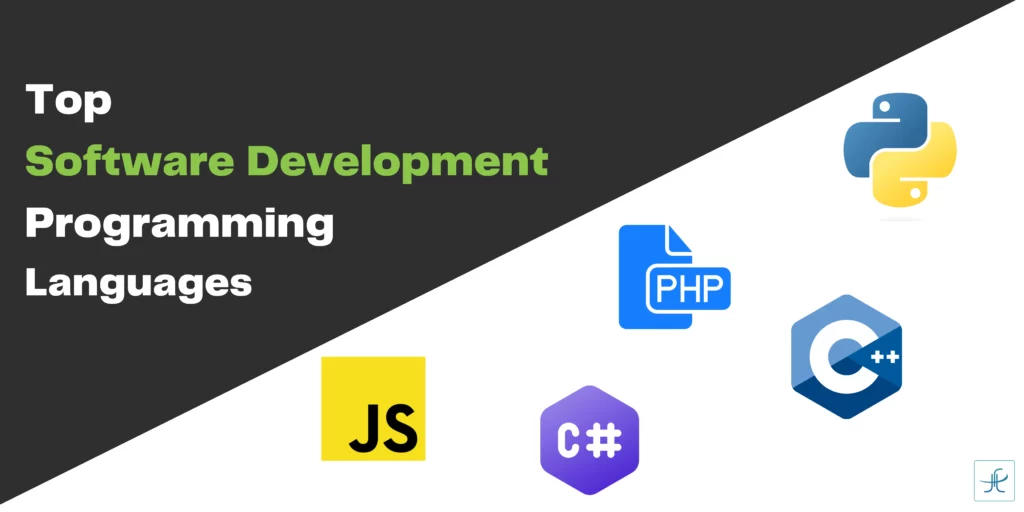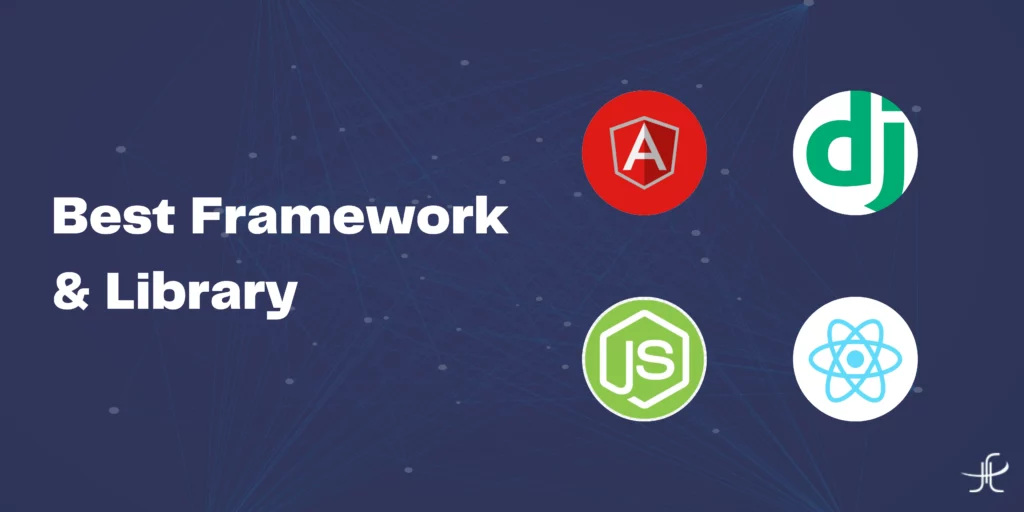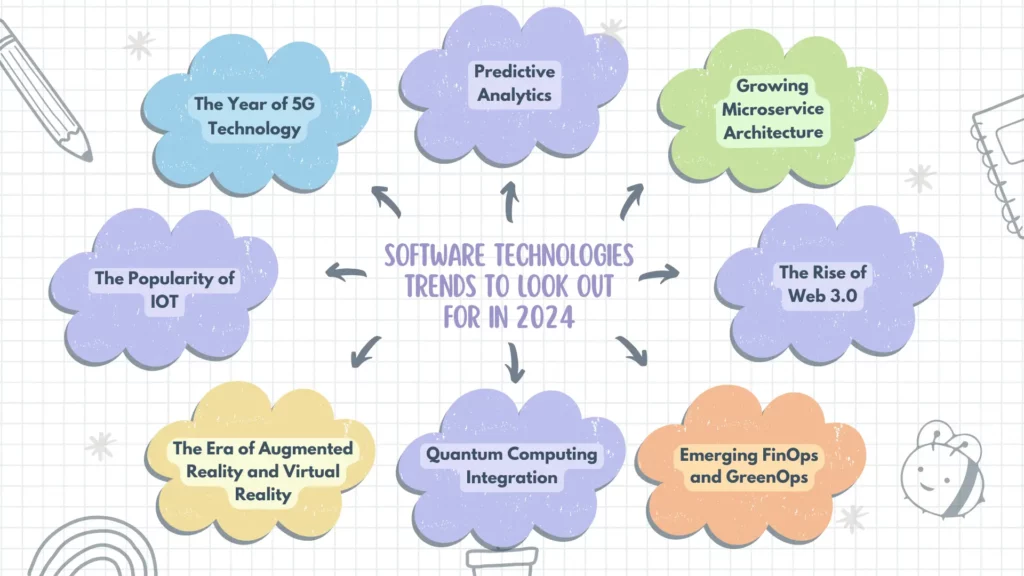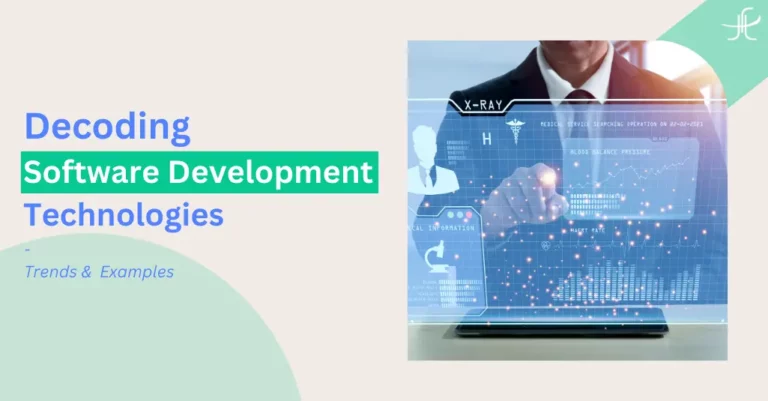We are witnessing the digital revolution, with software automating human daily life tasks, and predictive analytics as if one is guessing future events. But have you ever wondered about the prime factor behind all these advancements? All these are the result of new-age intelligent technologies. Technologies are reshaping the world’s architecture beyond what it used to be.
In the ever-evolving software development landscape, the journey from concept to code has undergone remarkable transformations, fueled by an insatiable quest for innovation and efficiency.
From the early days of punch cards and assembly languages to the sophisticated ecosystems of cloud computing and machine learning, the history of software development is a testament to humanity’s relentless pursuit of progress.
Today, as we stand on the precipice of a new era defined by artificial intelligence, blockchain, and quantum computing, the possibilities seem boundless, promising a future where the achievable boundaries continue to expand. Current technology in software development encompasses a diverse range of tools.
According to the study by Grand View Research, the global custom software development market was valued at USD 29.29 billion in 2022 and is expected to expand at a compound annual growth rate (CAGR) of 22.4% from 2023 to 2030.
With the global software market projected to reach staggering figures, the demand for cutting-edge technologies and skilled developers has reached unprecedented levels. As businesses strive to stay ahead of the curve, they look to harness the power of emerging trends such as microservice architecture, and DevOps services to drive innovation and gain a competitive edge.
What is Software Development Technology?
Software development technologies are the tools and methods that programmers use to design, architect, develop, test, and deploy software applications. These software technologies include— programming languages, frameworks and libraries, databases, and cloud computing platforms.
The use of software development technologies programming permeates virtually every aspect of modern life, from the applications we use on our smartphones to intelligent healthcare machines to the complex systems that power global businesses.
These computer software technologies serve as the building blocks for creating digital solutions that streamline processes, enhance productivity, and drive innovation across industries.
Whether it’s developing a mobile app, designing a website, or implementing an enterprise-level software solution, the judicious use of software development technologies is crucial for meeting the ever-evolving demands of today’s digital universe. Reach out to us for the industry’s best-designed UI/UX solutions.
Some key areas where technologies in software development find extensive use include:
- Web Development
- Mobile App Development
- Cloud Computing
- Custom Software Development
- Data Analytics
- Artificial Intelligence and Machine Learning
- DevOps
Software Development Technologies
Software development technologies come in a multitude of forms, each with its share of pros and cons:
We have gathered current technology in software development to understand the flow of programming stacks. The following are a few of the most widely used software technologies:
Programming Languages
Programming language is the fundamental building block of a software/application development process. There are a plethora of software programming languages in the software development market. Utilizing the right programming language for your software projects is essential for developers.
We’ve mentioned some of the most popular programming languages.

Python:
Python is a programming language used to develop software programs and websites, automate tasks, and perform data analysis. It is a general-purpose language, which means it can be used to deliver a wide range of programming tasks, including visualization, web development, prototyping, and automation, efficiently. Its adaptability and ease of use for beginners have made it one of the most popular programming languages available today.
It is compatible with nearly all current operating systems; the most recent update was made available in March 2022. To learn about the top real-world applications developed using Python, make sure to visit our blog. It is the powerhouse behind everything, from the software that drives self-driving cars to Netflix’s recommendation algorithm.
| Aspect | Description |
|---|---|
| Difficulty level | Beginner-friendly |
| Used for | Data analysis and machine learning, Web development, Automation or scripting, Software testing and prototyping |
| Pros | Simple syntax, vast ecosystem of libraries, cross-platform |
| Cons | Slower execution speed compared to lower-level languages |
| Major platforms | Google (search engine), Instagram, Dropbox, YouTube |
JavaScript:
JavaScript is a high-level, interpreted programming language primarily used for client-side web development. It allows developers to add interactivity and dynamic behavior to websites, making web pages more engaging and responsive to user actions. JavaScript can also be used for server-side development (Node.js) and for building desktop and mobile applications.
Key features of JavaScript include:
- Client-side scripting
- Object-oriented
- Event-driven
- Cross-platform compatibility
- Extensive ecosystem
Javascript is a versatile language that plays a vital role in modern web applications, enabling dynamic and interactive user experiences on the web. It is also the most used programming language worldwide with a dominating share of 63.61% among developers.
| Aspect | Description |
|---|---|
| Difficulty level | Moderate |
| Used for | Client-side web development, server-side development (Node.js), mobile app development (React Native), desktop app development (Electron), game development (Unity), IoT, etc. |
| Pros | Widely supported, runs on all major web browsers, versatile, event-driven, asynchronous programming model, large ecosystem of libraries and frameworks |
| Cons | Inconsistent browser support, potential security vulnerabilities, single-threaded nature can lead to performance issues in CPU-intensive tasks |
| Major platforms | Google (search engine), Facebook (social networking), Netflix (video streaming), Airbnb (hospitality), Slack (communication) |
Want to Build Custom Software That Streamlines Your Business Operations?
Get a free consultation and estimate from domain experts.
Based on our observations, developers tend to favor Python and Java over other programming languages. However, for guidance on selecting between Python or Java, the best language for developing an app, read our blog.
C++:
C++ is a powerful and widely used programming language that is an extension of the C programming language. It is known for its efficiency, flexibility, and performance, making it suitable for a wide range of applications, including system/software development, game development, embedded systems, and high-performance computing.
Here’s an overview-
- It is a general-purpose programming language.
- It supports the object-oriented programming (OOP) paradigm, allowing developers to, encapsulate data, and implement reusable code.
- High performance: C++ provides low-level access to system resources and hardware, enabling developers to write highly efficient and fast code. It’s often used in performance-critical applications where speed is essential.
- C++ comes with a standard library that provides a wide range of functions and data types.
- Its programs can be compiled to run on different platforms without modification, making it a cross-platform language.
| Aspect | Description |
|---|---|
| Difficulty level | Moderate to advanced |
| Used for | System/software development, game development, embedded systems, high-performance computing, financial applications, etc. |
| Pros | High performance, flexibility, rich standard library, object-oriented programming support, platform independence, backward compatibility with C |
| Cons | Complexity, steep learning curve, manual memory management can lead to memory leaks and errors, potential for undefined behavior |
| Major platforms | Microsoft Windows (operating system), Adobe (creative software), Mozilla Firefox (web browser), MySQL (database management system), Unreal Engine (game engine) |
C#:
C# (pronounced as “C sharp”) is a high-level, object-oriented programming language developed by Microsoft within its .NET framework. C# is widely used for building a variety of applications, including desktop, web, mobile, and gaming applications.
Key Features are:
- C# is a fully object-oriented programming language, supporting concepts like classes, objects, inheritance, polymorphism, and encapsulation.
- It is a strongly typed language. This helps catch errors at compile time rather than at runtime, leading to more reliable code.
- C# features automatic memory management through a garbage collector. This eliminates the need for manual memory management and reduces the risk of memory leaks and dangling pointers.
- C# is closely integrated with the .NET framework, which provides a vast library of classes and functions for common programming tasks.
- With the introduction of .NET Core, C# has become increasingly cross-platform. Developers can now write C# code that runs on Windows, Linux, and macOS, expanding its reach beyond just Windows-based systems.
| Aspect | Description |
|---|---|
| Difficulty level | Moderate |
| Used for | Desktop applications, web applications (ASP.NET), mobile applications (Xamarin), game development (Unity), cloud services (Azure), enterprise applications, etc. |
| Pros | Strongly typed, object-oriented, integration with .NET framework, cross-platform development with .NET Core, language interoperability, asynchronous programming support, LINQ |
| Cons | Windows-centric development environment, learning curve for beginners, reliance on Microsoft ecosystem, limited support on non-Windows platforms |
| Major platforms | Microsoft Windows (operating system), Xamarin (mobile development), Unity (game engine), Azure (cloud computing), Visual Studio (integrated development environment) |
PHP:
PHP (Hypertext Preprocessor) is a server-side scripting language primarily used for web development. It has become one of the most exciting programming languages for building dynamic web applications.
PHP is, known for its simplicity, versatility, and strong community support. It continues to evolve with updates and improvements, making it a reliable choice for building modern web applications.
Here are some key features of PHP:
- PHP is primarily used for server-side scripting. This allows for the dynamic generation of HTML, data processing, and interaction with databases.
- Its syntax is similar to C and Perl, making it relatively easy to learn and use.
- PHP runs on various operating systems, including Windows, Linux, macOS, and Unix, making it a versatile choice for web development projects on different platforms.
- It has built-in support for interacting with databases, including MySQL, PostgreSQL, SQLite, and others.
- PHP has a vast ecosystem of open-source libraries and frameworks. Popular PHP frameworks include Laravel, Symfony, CodeIgniter, and Yii.
| Aspect | Description |
|---|---|
| Difficulty level | Easy to learn, wide adoption, extensive documentation, a large ecosystem of libraries and frameworks, database integration, cross-platform compatibility |
| Used for | Server-side web development, building dynamic websites, web applications, content management systems (CMS), e-commerce platforms, forums, etc. |
| Pros | Easy to learn, wide adoption, extensive documentation, large ecosystem of libraries and frameworks, database integration, cross-platform compatibility |
| Cons | Inconsistent syntax, potential security vulnerabilities, scalability challenges in large-scale applications, performance issues compared to some other languages |
| Major platforms | WordPress (content management system), Magento (e-commerce platform), Facebook (social networking), Wikipedia (online encyclopedia), Slack (communication) |
Frameworks and Libraries
Frameworks and libraries are tools used in software development to streamline the process of building applications by providing pre-written code, modules, and functionalities that developers can leverage.
Benefits of Frameworks and Libraries:

- Faster development: Frameworks and libraries provide pre-written code and components that developers can reuse. This accelerates development.
- Consistency: Frameworks often enforce coding standards, and libraries provide standardized solutions to common problems, ensuring consistency in implementation across projects.
- Efficiency: By leveraging existing code and functionalities, developers can save time and effort, leading to increased productivity and shorter development cycles.
- Scalability: Frameworks and libraries are designed to handle various scalability challenges, such as managing large codebases, and handling increased traffic or data volumes.
- Security: Frameworks and libraries often come with built-in security features, such as input validation, and authentication mechanisms.
React:
React is a JavaScript library for building user interfaces. It was developed by Facebook and released in 2013. React is known for its declarative and efficient approach to building UI components.
Key Features:
- Efficiency: React utilizes a virtual DOM and efficient rendering algorithms to optimize performance.
- Declarative: React employs a declarative programming paradigm, simplifying UI development by describing the desired state rather than the steps to achieve it.
- Component-based: React encourages the creation of reusable and self-contained components, enhancing code modularity and maintainability.
- Flexibility: React can be integrated seamlessly with other libraries and frameworks, offering developers flexibility in tool selection.
Famous platforms built utilizing it:
- Airbnb
- Netflix
Django:
Django is a high-level Python web framework that encourages rapid development and clean, pragmatic design. It follows the DRY (Don’t Repeat Yourself) principle and emphasizes reusability and pluggability.
Unveiling the Process Behind Crafting Custom Facility Management Software for Optimal Efficiency and Cost Reduction.
Key Features:
- Rapid Development: Django’s built-in features like authentication, ORM, and templating engine streamline development, enabling faster prototyping and deployment.
- Scalability: Django is equipped to handle high-traffic applications with ease, thanks to its scalability features and built-in caching mechanisms.
- Security: Django incorporates robust security measures by default, including protection against common web vulnerabilities like SQL injection and cross-site scripting (XSS).
- Community: Django boasts a vibrant community of developers and contributors, providing extensive documentation, tutorials, and third-party packages to support developers.
Famous platforms built utilizing it:
- Spotify
- Disqus
- Mozilla Firefox Sync
Angular –
Angular is a popular JavaScript framework for building dynamic web applications. It’s developed and maintained by Google and follows the MVC (Model-View-Controller) architecture pattern.
Key Features:
- Two-way Data Binding: Angular’s two-way data binding ensures synchronization between the model and the view, eliminating the need for manual DOM manipulation.
- Modularity: Angular promotes a modular architecture through components, modules, and services, facilitating code organization and reusability.
- Dependency Injection: Angular’s dependency injection system enhances code maintainability and testability by facilitating loose coupling between components.
- CLI Tools: Angular provides command-line interface (CLI) tools for scaffolding, testing, and deployment, streamlining development workflows.
Famous platforms built utilizing it:
- YouTube TV
- Forbes
- Xbox
- Udacity
Node.js –
Node.js is an open-source server-side runtime environment built on Chrome’s V8 JavaScript engine. It allows developers to run JavaScript on the server, enabling event-driven, non-blocking I/O operations.
Key Features:
- Asynchronous I/O: Node.js utilizes an event-driven, non-blocking I/O model, making it highly efficient for handling concurrent operations and real-time applications.
- JavaScript Everywhere: Node.js enables developers to use JavaScript for both client-side and server-side development, fostering code reuse and consistency.
- Scalability: Node.js offers scalability through its single-threaded, event-driven architecture, allowing applications to handle a large number of concurrent connections.
- Vibrant Ecosystem: Node.js boasts a rich ecosystem of modules and packages available via npm (Node Package Manager), empowering developers to extend its functionality and expedite development.
Famous platforms built utilizing it:
- Netflix
- PayPal
- Uber
- NASA
Databases –
Software applications require databases to store and manage data.
Developers can efficiently organize and retrieve data with their help, and they can modify data without causing any disruptions to the application as a whole.
Here is a brief overview of two popular databases.
MySQL –
MySQL is an open-source relational database management system (RDBMS) known for its reliability, speed, and ease of use. It was originally developed by MySQL AB, acquired by Sun Microsystems in 2008, and later by Oracle Corporation.
- 1. MySQL is a relational database system, that organizes data into tables with rows and columns, allowing for efficient data retrieval and manipulation.
- 2. It is designed to handle large-scale databases and high-traffic websites, with features like replication and clustering for scalability.
- 3. MySQL offers a user-friendly interface, making it accessible to beginners and experienced database administrators.
MongoDB –
MongoDB is a NoSQL database management system known for its flexibility, scalability, and performance. It stores data in flexible, JSON-like documents, making it ideal for handling unstructured or semi-structured data.
- 1. MongoDB stores data in flexible, JSON-like documents called BSON (Binary JSON), allowing for easy storage and retrieval of complex data structures.
- 2. Its schema is dynamic, allowing for on-the-fly changes to the data structure without downtime or schema migrations, making it agile and adaptable.
- 3. It offers high performance with features like in-memory caching, index support, and native replication, ensuring fast data access and retrieval.
Cloud Computing –
Cloud computing is a technology that enables access to computing resources, such as servers, storage, databases, networking, and software, over the internet. It allows organizations to scale resources up or down dynamically based on demand, without the need for investing in and managing physical infrastructure.
Amazon Web Services (AWS) –
AWS is a reliable cloud computing platform provided by Amazon.
It offers a wide range of services, including computing power, storage, databases, machine learning, analytics, and more. AWS is known for its scalability, reliability, and extensive global infrastructure.
Google Cloud Platform (GCP) –
Google Cloud Platform (GCP) is a suite of cloud computing services offered by Google.
It provides a variety of services, including computing, storage, databases, machine learning, and networking. GCP is recognized for its performance, security, and integration with Google’s ecosystem, including Google’s data centers and global network infrastructure.
As mentioned above tech stacks refer to the combination of programming languages, frameworks, and tools used to build software applications, such as the MEAN stack (MongoDB, Express.js, Angular, Node.js) or the LAMP stack (Linux, Apache, MySQL, PHP).
Developments in software include advancements in technologies, methodologies, tools, and practices used in the development and deployment of software applications
Software Development Technologies Trends to Look Out for in 2024
Examples of software development encompass a wide range of applications, such as web development, mobile app development, enterprise software, gaming software, and embedded systems.

Trending technologies in software development include artificial intelligence (AI), machine learning, blockchain development, the Internet of Things (IoT), augmented reality (AR), virtual reality (VR), and cloud computing.
As technology continues to evolve, several trends are expected to shape the landscape in 2024. The latest technologies in the software industry encompass a wide range of innovations. These trends and the latest technology in the software industry include the following mentioned below-
The Year of 5G Technology
With the global deployment of 5G networks, we can expect faster internet speeds, lower latency, and enhanced connectivity, paving the way for innovative applications in areas like IoT, AR/VR, and autonomous vehicles.
The popularity of IoT
The Internet of Things (IoT) will continue to gain traction, enabling interconnected devices to collect and exchange data seamlessly, driving efficiencies, improving decision-making, and creating new business opportunities.
If you want to learn more about IoT and its future trends, be sure to check out our blog for informative articles and insights.
The Era of Augmented Reality and Virtual Reality
AR and VR technologies will see widespread adoption across various sectors, including gaming, entertainment, healthcare, and education, offering immersive experiences and transforming how we interact with digital content.
Emerging FinOps and GreenOps
FinOps and GreenOps practices will gain prominence as organizations prioritize cost optimization and environmental sustainability in their cloud operations, leading to more efficient resource utilization and a reduced carbon footprint.
The Rise of Web 3.0
Web 3.0 technologies are the most advanced software development examples, including blockchain, decentralized applications (DApps), and decentralized finance (DeFi), which will continue to evolve, offering greater security, scalability, and interoperability, driving innovation in the digital economy.
Growing Microservice Architecture
Microservice architecture will remain a dominant trend in software development, enabling organizations to build scalable, resilient, and modular applications that can adapt to changing business needs more effectively.
Predictive Analytics
The use of predictive analytics will become more prevalent, empowering businesses to anticipate future trends, forecast outcomes, and make data-driven decisions with greater accuracy and confidence.
Quantum Computing Integration
While still in its early stages, quantum computing will see increased experimentation and integration into research, enabling breakthroughs in areas like cryptography, optimization, and drug discovery, albeit at a limited scale.
What Are Futuristic Software Technologies?
Future trends in software development may include advancements in AI, AR/VR and machine learning, quantum computing, edge computing, cybersecurity, and decentralized technologies like blockchain.
Visit our blog to learn more about augmented reality and its scope in the future of advanced technologies.
Futuristic software technologies encompass innovative advancements that are reshaping the digital landscape and driving unprecedented possibilities. Here are some examples of such technologies:
1. Internet of Behavior (IoB) for Personalization
What is IoB? The Internet of Behavior (IoB) integrates data from various sources to understand and influence human behavior. By analyzing user data from social media, sensors, wearables, and other sources.
IoB enables hyper-personalization in marketing, healthcare, education, and other domains, offering tailored experiences and recommendations based on individual behaviors and preferences.
2. Low-Code/No-Code Development
The rise of low-code/no-code platforms democratizes software development by empowering non-technical users to create applications without extensive coding knowledge.
These trends in application development promote rapid prototyping, accelerate digital transformation initiatives, and enable citizen developers to contribute to innovation and problem-solving in organizations.
3. Artificial Intelligence as an Everyday Assistant
Artificial intelligence (AI) is evolving to become an integral part of our daily lives, acting as virtual assistants that streamline tasks, automate processes, and provide personalized recommendations.
AI-driven assistants enhance productivity, improve decision-making, and deliver seamless user experiences across devices and applications, marking a significant step toward human-computer collaboration in the future.
Conclusion
In the dynamic state of software development, staying updated with the top technologies is crucial for creating cutting-edge solutions. Established frameworks and libraries like React, Angular, and Django remain stalwarts in the industry while emerging tools and languages continually redefine the landscape. Cloud platforms such as AWS, Azure, and Google Cloud provide the infrastructure for scalable and resilient applications. However, the ever-evolving nature of software engineering ensures that new software development technologies are constantly surfacing, offering innovative solutions to meet the evolving needs of developers and users alike.
By decoding these software development technologies with detailed study and practical examples, developers can confidently navigate the complex ecosystem. Embracing established and trending tools allows for the creation of robust, efficient, and user-friendly applications that propel businesses forward in the digital age. With a finger on the pulse of the top technologies and a willingness to explore new advancements, software developers can lead the charge toward groundbreaking innovations and transformative experiences in the world of technology.
We would love to hear your comments relating to the post. Got some other thoughts? Drop us words through our contact page.


